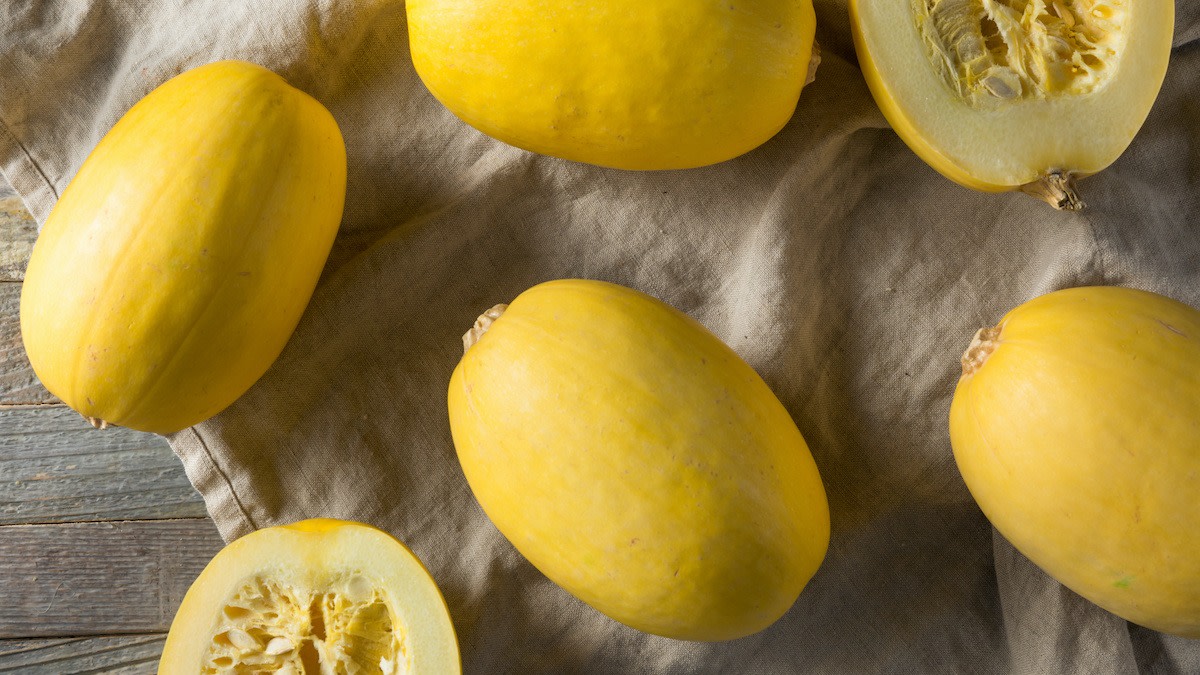How to Grow Spaghetti Squash in Your Vegetable Garden
Written by MasterClass
Last updated: Jun 7, 2021 • 3 min read
Spaghetti squash is a unique variety of winter squash that makes a great addition to your vegetable garden.
Learn From the Best
What Is Spaghetti Squash?
Spaghetti squash is an early autumn squash featuring a light, stringy interior with a subtle flavor that’s perfect as a neutral base for low-carb, gluten-free, and vegan dishes. Spaghetti squash is actually a variety of the same species (Cucurbita pepo) as delicata squash, butternut squash, pumpkins, zucchini, and acorn squash. It's considered a winter squash because it produces large fruits that grow on a squash vine. (Summer squash varieties, like zucchini, grow in a bush rather than a trailing vine and produce smaller fruits with thinner rinds.)
How to Plant Spaghetti Squash in Your Garden
Growing your own spaghetti squash from seed is a simple process.
- 1. Plant squash seeds. Direct-sow spaghetti squash seeds after the last spring frost in fertile, warm soil in an area that receives full sun. Spaghetti squash vines can get quite long, so choose a garden bed or large container with plenty of room for your squash to spread out. Consult your seed packet for detailed planting information, since some varieties of spaghetti squash are bushier, while others produce longer vines.
- 2. Care for squash seedlings. During the germination period, keep the soil moist and remove any weeds surrounding the seedlings. Row covers or mulch can help prevent weeds and deter insects.
- 3. Thin out seedlings. If multiple seedlings sprout close together, thin out your spaghetti squash plants to keep about three feet of space between plants.
How to Grow and Care for Spaghetti Squash
Spaghetti squash plants aren't hard to grow, but they do require some maintenance.
- 1. Fertilize with compost. Squash plants are heavy feeders, meaning they drain the soil of nutrients. In addition to planting squash seeds in soil mixed with plenty of compost, consider side-dressing your plants with compost in the middle of the growing season by applying a small amount of compost around the base of the plant.
- 2. Suppress weeds. Suppress weed growth around squash plants by applying mulch at the base of the plant. Diligently weed at the beginning of the growing season.
- 3. Prune flowers. Spaghetti squash relies on pollination from bees to develop female flowers into fruits. To encourage the production of more female flowers, you can remove non-fruiting male flowers (which have a thin stem) by using pruning shears to snip the flower stem where it connects to the squash vine. Don't take them all—you'll need to leave a few for pollination. Squash blossoms are delicious in quesadillas or on top of pizza.
- 4. Protect your skin. When pruning or harvesting your spaghetti squash plants, cover your skin to prevent squash itch, a skin irritation that comes from touching the spiny hairs on squash (and cucumber) leaves and stems.
- 5. Prevent pests. Spaghetti squash is vulnerable to squash bugs, spider mites, squash vine borers, and cucumber beetles. Prevent these pests by companion planting with borage, nasturtiums, dill, or marigolds. Check the underside of leaves for the eggs of squash bugs, and simply squish them with your hands or wipe them off with a paper towel. Avoid using insecticides, which can harm bees and prevent them from pollinating your squash plants.
- 6. Prevent powdery mildew. Powdery mildew is a plant disease caused by plants that are too close together or overwatered. Remove affected leaves, and water sparingly.
How to Harvest Spaghetti Squash
Harvest spaghetti squash in early fall when the stem of each squash starts to break away from the vine. It will take about 50 days after the fruit has started to set for spaghetti squash to reach harvest size. Use pruning shears to remove the squash where its stem meets the vine. Store spaghetti squash in a cool, dry place.
Learn More
Grow your own food with Ron Finley, the self-described "Gangster Gardener." Get the MasterClass Annual Membership and learn how to cultivate fresh herbs and vegetables, keep your house plants alive, and use compost to make your community - and the world - a better place.
